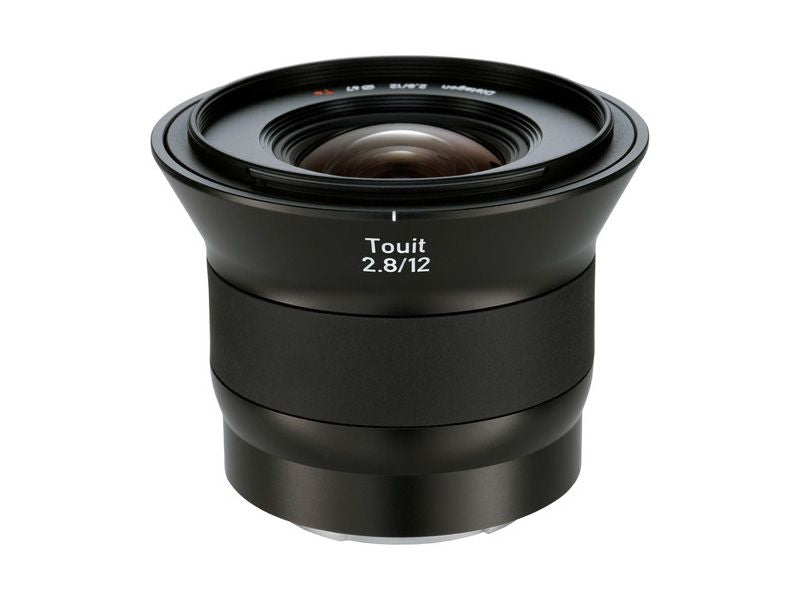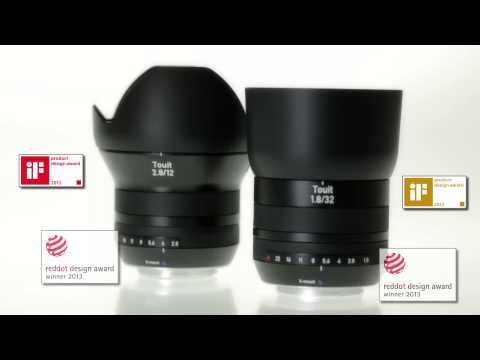Product Description
ZEISS 12mm Touit f2.8 Super wide-angle Lens for Sony E-mount
- E-Mount Lens/APS-C Format
- 18mm (35mm Equivalent)
- Aperture Range: f/2.8 to f/22
- Two Aspherical Elements

As far as the eye can see
The ZEISS Touit lens range brings ZEISS quality and expertise to Sony E-mount and Fujifilm X-mount APS-C sensor camera systems. With fast, accurate autofocus and specially designed optics, these prime lenses deliver superb-quality images. Lightweight and compact in your kit bag with a metal lens barrel, they will nevertheless stand up to many years of use.
The 12mm focal length of this ZEISS Touit 2.8/12 lens has a super-wide-angle diagonal field of view of an impressive 99°. The Distagon Floating Elements Design and the special coatings produce sharp images, rich colours and minimal distortion or aberrations edge to edge and throughout the entire focusing range. A minimum focusing range of 18cm means you can get creative with unusual angles and perspectives. Ideal for landscapes, architecture and interiors, when you want to include the full picture choose this wide-angle lens and discover the outstanding image quality for your APS-C sensor camera system.

ZEISS T* anti-reflective coating
The optical elements of ZEISS lenses feature T*® anti-reflective coating on all surfaces and an optical design that guarantees images of superior brilliance at all times, even in unfavourable lighting conditions. We apply the anti-reflective coating to the lens surfaces by the vapour deposition of extremely thin, transparent layers on the glass. In this process, special substances are vaporized with extremely high energy in a high-vacuum environment and are subsequently deposited on the glass surfaces, one after another, as layers with precisely controlled thicknesses to achieve the desired reduction of reflective properties. The first coating techniques were employed by ZEISS as long ago as in the 1930s.

Excellent resolution and high contrast
Richly saturated and vivid colours are a must in the creation of lasting impressions. However, stray light within an optical system leads to a lightening of the image that is particularly noticeable in the shadows. This reduces image contrast, with the result that exposures lack contrast and appear faded. To avoid this, ZEISS combines various specially developed technologies to reduce the undesirable effects of stray light.
Aspherical design
The aspherical lens design ensures consistent imaging performance throughout the entire focusing range as well as sharpness to the periphery of the image. The asphere's more complex surface profile can reduce or eliminate spherical aberration and also reduce other optical aberrations compared to a simple lens.

Innovative product design
Innovative product design to ensure superior handling and fulfil the most stringent aesthetic expectations. ZEISS lenses are among the winners of the several thousand products entered for prominent design awards. The unmistakable new product design is based on an integrative concept and focuses on essential functional elements. Even the lens hood, typically an accessory, is seamlessly integrated into the overall design. The metal bayonet mount guarantees extreme rigidity and rubberised setting rings enable precise manual control when needed. Flush-fitting, satinised surfaces visualise the optical and mechanical precision of each lens.

Smooth and reliable autofocus
The design of the autofocus system requires an extremely accurate shifting of particular lens groups. The focusing system of ZEISS lenses is designed to ensure a robust and smooth-running autofocus mechanism with the best imaging performance.
Floating Elements Design
Today’s camera technologies and high-resolution sensors demand continuous improvement of lens performance. Thanks to the use of the latest floating element design principles, optical aberration effects in ZEISS lenses are reduced to a minimum throughout their entire focusing range. This is achieved by variation of the axial distance between individual lens elements or groups. This adjustment of the lens-to-lens distance is coupled to the distance setting to ensure correct compensation at all times. The mechanical construction of these lenses is extremely complex and they must be assembled with utmost precision, both of which are key competencies of ZEISS.



























